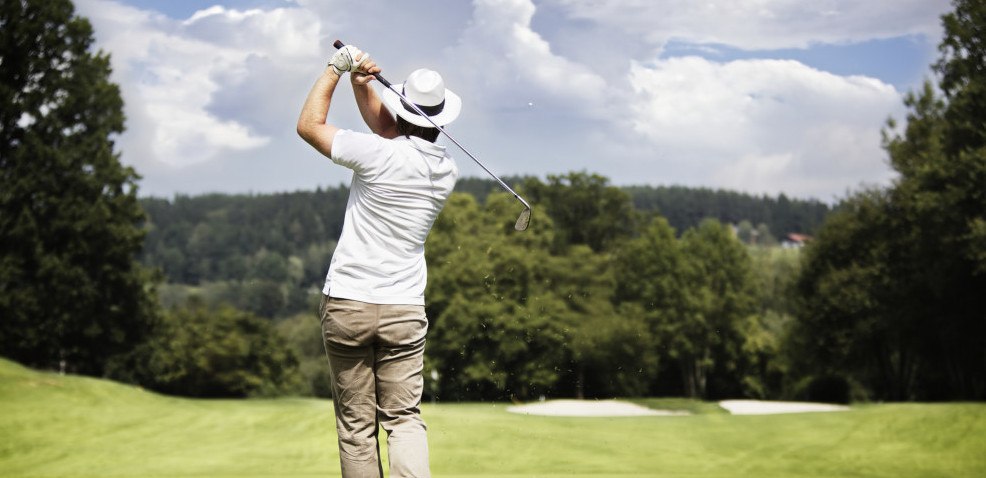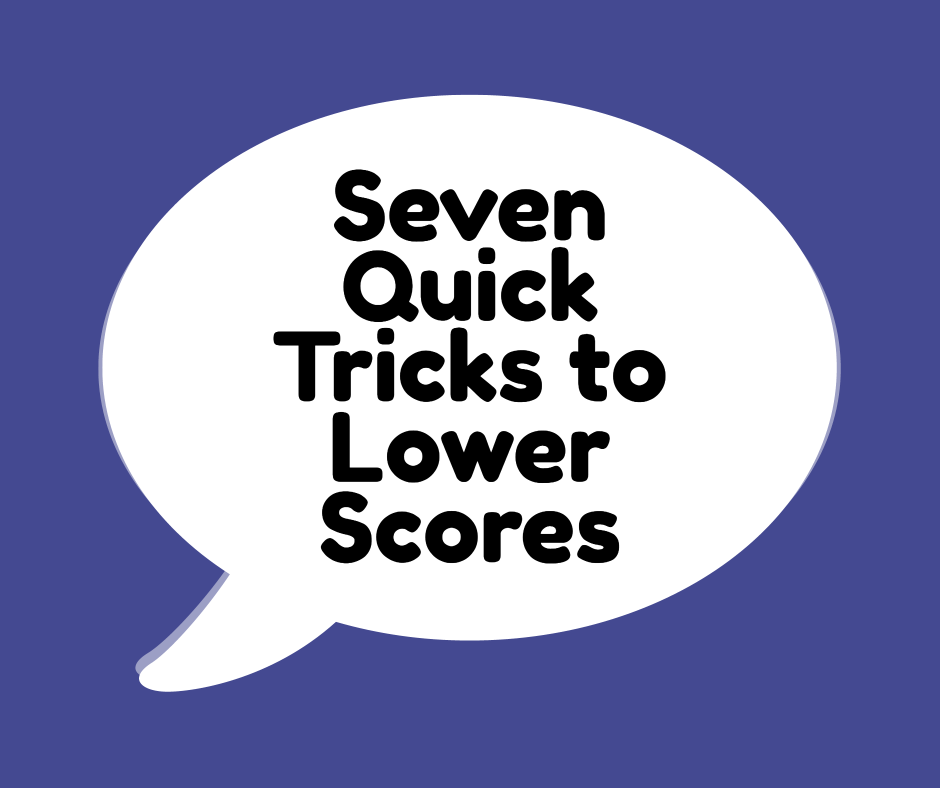
Golf can be a brute of a game. You can play for years, think you are really starting to master the game and one day it all falls apart and you are writing 12 somewhere on the card! there are no two ways about it, getting better is a never-ending process and you never really finish. This is as true for Tiger as it is for the rest of us. But all isn’t lost. There are still a few golfing tips and tricks that can make a difference, lower scores or just help us all have a better time on the course. Here are a few of my favourites.
Master Your Alignement
This might not seem like a big deal but I am coming to believe that it could just be the biggest stroke saver out there. I was reminded of it a month or two ago when one of the club pros looked at my putting stroke and pointed out that my alignement was way off. Unsurprisingly, I was missing a lot of putts but maybe even worse, I was unconsciously compensating and trying to manipulate the face as I hit the ball rather than just letting the putter head stroke through the ball.
This isn’t just an issue on the greens either. I have had playing partners point out fairly often that there is a big difference between where I think I am aiming and where I am actually aiming.
Happily, this can be quite an easy fix. Getting someone to stand behind you while you aim and tell you where you are actually directing the shot is a fast and easy way of reducing errors.
Pick the Right Club
Again, this is going to seem obvious but really isn’t. You will often hear that you should club up or hit enough for the back of the green. I am not always sure this is the best option. What if short is safe (as is often the case?) Also, it is going to depend on your game. For example, I am much more comfortable hitting a full shot hard (but not swinging out of my boots) than trying to finesse something in. I stand more chance of hitting a green and stopping the ball with, say, a full wedge than trying to control a nine which generally leads to slowing down into the ball and a fat or getting out of sync and pulling it left for me.
You could be just the opposite and go far better with a controlled 75% swing rather than hitting it hard. The point is, know your game and pick your club depending on that and not on what a youtube pro tells you (much as some youtube advice is great.)
Leave the Last Shot Behind
Golf is, as it has always been said, mainly played between the ears. This is especially true when trying to make up for the last shot. How many times do we as golfers hit a horrible shot and then try to to play the shot of a lifetime next to compensate? Has it ever worked for anyone? If you hit your drive into the woods, aiming for a controlled draw under the tree, through that 2 foot gap between the next two trees and then stopping just after the bunker really isn’t the percentage play!
This is also true after a great shot. The fact that the you hit it to 2 feet with a seven iron over the bunker doesn’t mean you should take on that forced carry over water with your driver when normally you would lay up! I always find it interesting how much better the average hacker (like me) would play if they had a tour caddie with them. I am guessing the 90 shooter would be a lot closer to an 80 shooter without changing anything apart from listening to the advice of the man on the bag.
Choose the Right Tees
There are a lot of things that golfers do that really don’t have much rhyme or reason apart from “we’ve always done it this way.” This includes the choice of tee box. Unless you are playing in a competition, there is no reason why you should go off the tee that doesn’t suit your game. In fact, there is no reason why you should do this in competition either! For example, I play off high single figures. In competition, I would generally be off the back (white tees) and get about a dozen shots. There is absolutely nothing to stop me asking to go from the yellow tees that are a little further forward. I will get fewer shots (about 8) but that’s fine. The slope is calculated so that my chances of scoring should be about the same.
However, suddenly I feel a lot more confident standing on the tee. It isn’t just a distance thing either. Visually, a few of the back tees are quite intimidating. You could just tell me to “man up” but I play golf for enjoyment, not to prove anything to anyone. I am also a fairly long hitter so my problems off the back tees are actually fairly small compared to others.
In my opinion, if you are a teen or single digit handicapper, you should never be obliged to play from a box that makes it highly unlikely to shoot your handicap index. In fact, I regularly play for fun from the junior tees using a 6 or 7 iron to tee off!
Chip on One Leg
This is going to sound a little bit strange and it is probably one to use in practice rather than the first time you play with a new group out on the course, but it has quite sound logic behind it. One of the big problems in the short game is ball contact, thin or more often than not, fat. There are probably lots of reasons for that (I am not a golf pro!) but the low point of the swing is one of the most common.
A simple fix is to hit chip shots standing just on your leading leg. Why does this work? It stops you swaying away from the ball and transferring weight to the back leg. This mean that there is no need to transfer back to the lead leg and worry about getting there a little bit early or late which cn lead to poor contact. On a chip shot, power isn’t key so you don’t need that solid base so the only really important thing is good strike.
This is something I have tried at various times and I think it works very well as a reset. Use it for a practice session or two until you feel that there is no sway away from the ball and contact is solid then just get back to chipping with a normal stance.
Chipping off the Toe
This is another way of dealing with poor contact on chips. It really works best for chip and run type shots just off the green. Set up to the ball as normal and then stand the club up so that the heel is off the ground/the toe of the club is down. Chip with a putting-style motion and you should find that you get very consistant contact.
In my experience, this works really well but does need a couple of things for it to work. Firstly, standing the club up changes what is known as D-plane (it basically makes the club face point in a slightly different direction.) It is quite easy to adapt but be aware the first time that you try it that the ball will head off on a slightly different line than you are probably used to.
The second point is that the ball tends to come off the face a little bit ‘dead’ compared to normal. You may find yourself leaving the first few short of the hole. This is, in my opinion, quite a good thing though. It leaves less chance of decelerating into the ball and duffing it because you know it isn’t going to fly way past even on a very short shot.
This doesn’t need to be a training aid only. A lot of very good golfers (and me!) have this shot in their toolbox and it might be one of the most widely used golfing tips and tricks you see on-course.
There you go. I actually have quite a few more of these, but I will save the rest for another day. If you have any to share or you tried these ones, i would love to hear from you in the comments below.






